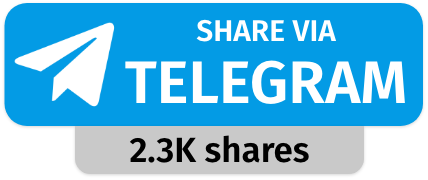Today’s Current Affairs: 28th August 2025 for UPSC IAS exams, State PSC exams, SSC CGL, State SSC, RRB, Railways, Banking Exam & IBPS, etc
Table of Contents
Vibrant Villages Programme: Two day Workshop
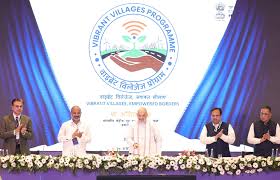
Union Home Minister and Minister of Cooperation recently inaugurated a two-day workshop on the Vibrant Villages Programme (VVP) in New Delhi, organised by the Border Management Division of the Ministry of Home Affairs.
- It is a Centrally Sponsored Scheme implemented over the financial years 2022-23 to 2025-26.
- Objective is comprehensive development of the 2,967 villages in 46 blocks in 19 districts abutting the northern border in the States of Arunachal Pradesh, Himachal Pradesh, Sikkim, Uttarakhand, and UT of Ladakh.
- This will help in encouraging people to stay in their native locations in border areas and reversing the outmigration from these villages, adding to improved security of the border.
- The programme will provide funds for the development of essential infrastructure and the creation of livelihood opportunities.
- The programme envisages focused areas of intervention in the select villages for the creation of opportunities for livelihood generation through promotion of tourism and cultural heritage, skill development and entrepreneurship, and development of cooperative societies, including agriculture/horticulture, cultivation of medicinal plants/herbs, etc.
- Interventions also include providing road connectivity to unconnected villages, housing and village infrastructures, energy including renewable energy, television and telecom
- Vibrant Village Action Plans will be created by the district administration with the help of Gram Panchayats, and 100% saturation of Central and state schemes will be ensured.
- There will be no overlap with the Border Area Development Programme.
- Vibrant Villages Programme -II (VVP-II) is a Central Sector Scheme (100% Centre funding) approved by the Union Cabinet during April 2025, furthering its commitment for the vision of Viksit Bharat@2047 for ‘Safe, Secured & Vibrant land borders’.
- It has a total outlay of ₹6,839 crore.
- The Programme would help in the comprehensive development of the villages located in the blocks abutting international land borders (ILBs), other than the Northern border already covered under VVP-I.
- With a total outlay of Rs.6,839 crore, the programme shall be implemented in select strategic villages in the States/UTs of Arunachal Pradesh, Assam, Bihar, Gujarat, J&K (UT), Ladakh (UT), Manipur, Meghalaya, Mizoram, Nagaland, Punjab, Rajasthan, Sikkim, Tripura, Uttarakhand, Uttar Pradesh, and West Bengal till the FY 2028-29.
- Both VVP-I and VVP-II are transformative initiatives designed to make border villages self-reliant and vibrant.
National Designated Authority (NDA) to Enable Carbon Emissions Trading Regime:
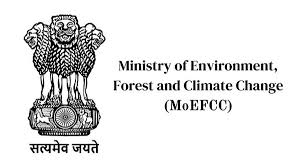
The Ministry of Environment, Forest and Climate Change recently announced a National Designated Authority (NDA), a mandatory requirement under the provisions of the 2015 Paris Agreement, to enable a carbon emissions trading regime.
- Within the Paris Agreement, a section called Article 6 defines the contours under which such an emissions trading regime or a market can take shape.
- A long-standing bone of contention among countries, Article 6 was finally passed at the 29th edition of the climate Conference of the Parties (COP29) in Baku, Azerbaijan, in November 2024.
- The creation of an NDA is a mandatory requirement under Article 6.
- NDA will be a 21-member committee headed by the Secretary of the Environment Ministry.
- Representatives include officials from the Ministries of External Affairs, Steel, and Renewable Energy, and NITI Aayog.
- The NDA’s responsibilities include
- recommending to the Union government a list of activities that can be considered for the trading of emission reduction units from projects under Article 6;
- modifying them from time to time in line with national sustainable goals, country-specific criteria, and other national priorities;
- receive projects or activities for evaluation, approval, and authorisation;
- authorise the use of emission reduction units from projects for use towards achievement of Nationally Determined Contributions (NDC).
- The NDC refers to commitments by countries to reduce emissions by diverting their energy consumption towards renewable energy sources and taking action to reduce carbon concentrations in the atmosphere.
- India’s NDC commits to reducing its GDP’s emission intensity by 45% by 2030 from 2005 levels, achieving 50% electric power capacity from non-fossil fuel sources by 2030, and creating an additional carbon sink equivalent to 2.5-3 billion tonnes of carbon dioxide by 2030 through afforestation.
Inverted Duty Structure under GST:
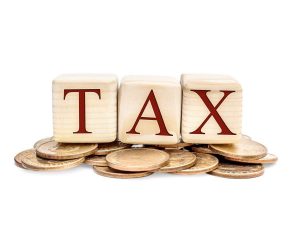
Tax experts have broadly welcomed the Centre’s proposal for a two-tier GST rate structure while cautioning that critical issues such as inverted duty structure need to be addressed for the reform to be fully effective.
- An inverted duty structure in GST occurs when the tax rate on inputs exceeds the tax rate on output.
- For example, in the textile industry, the input tax rate ranges from 12 to 18%, while most finished products are taxed at 5%.
- This implies that sellers have fewer options for offsetting the cost of input taxes.
- This situation might result in an accumulation of input tax credit (ITC), which can’t be used for the output tax liability.
- The accumulation of ITC due to unutilized ITC will have to be carried over to the next financial year until it can be utilized by the registered taxpayer for payment of output tax liability.
- This can result in higher tax costs for businesses and/or an increase in the hidden tax cost for consumers.
- To solve this issue, the GST law allows for a refund or reversal of ITC.
- The refund is determined using a method including the turnover of the inverted rated supply, the net ITC, and the overall turnover.
- Exceptions where the refund of the unutilised input tax credit cannot be claimed, are as follows:
- Output supplies are nil-rated or fully exempt supplies except for supplies of goods or services or both as may be notified by the Government on the recommendations of the GST Council.
- If the goods exported out of India are subject to export duty.
- If the supplier claims a refund of output tax paid under the IGST Act.
- If the supplier avails duty drawback or refund of IGST on such supplies.
Sutlej River:
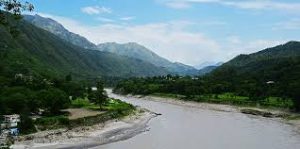
With the Sutlej swelling due to incessant rain in its catchment areas and heavy releases from dams, evacuation in several low-lying villages of Fazilka and Ferozepur districts began late Tuesday afternoon.
- Sutlej River is an important tributary of the Indus river.
- It is the longest of the five big rivers that flow through the Punjab region in northern India and Pakistan.
- It is also known as “Satadree”.
- It is located north of the Vindhya Range, south of the Hindu Kush segment of the Himalayas, and in Pakistan.
- It rises on the north slope of the Himalayas in Lake Rakshastal in southwestern Tibet at an elevation above 15,000 feet (4,600 metres).
- It is one of only three Trans-Himalayan rivers originating in the high Tibetan Plateau that cuts across the mighty Himalayan ranges. The other two are the Indus and the Brahmaputra.
- The Sutlej enters India by flowing west and south-westwards through the Shipki La Pass in Himachal Pradesh at an altitude of 6,608 metres.
- The river then flows through Punjab near Nangal before meeting the Beas River. The merger of these two rivers goes on to form 105 Km of the India-Pakistan border.
- The river continues to flow for another 350 Km before joining the Chenab River.
- The combination of the Sutlej and Chenab Rivers forms the Panjnad, which finally flows into the Indus
- It has a total length of 1550 km, out of which 529 km is in Pakistan.
- The hydrology of the Sutlej is controlled by spring and summer snowmelt in the Himalayas and by the South Asian monsoon.
- Tributaries: Spiti River, Baspa River, Soan River, and the Nogli Khad are the major tributaries of the Sutlej River.
- The waters of the Sutlej are allocated to India under the Indus Waters Treaty between India and Pakistan, and are mostly diverted to irrigation canals in India.
- There are many hydroelectric and irrigation projects across the river, such as the Bhakra-Nangal Dam, Kol Dam, Nathpa Jhakri Project, and Baspa Hydel Scheme.
Rare Earth Magnet:
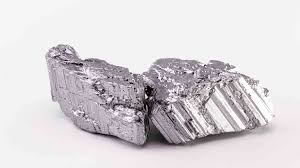
Automakers too are cutting down on certain non-essential equipment in their vehicles to reduce the usage of rare earth magnets.
- Rare earth magnets are a type of permanent magnet made from alloys of rare earth elements.
- They are known for their exceptional magnetic strength,high energy density, and superior performance compared to other types of magnets.
- These magnets are widely used in various industries due to their ability to generate strong magnetic fields in compact sizes.
- Their global supply chain is currently dominated by China, which accounts for about 90% of processing capacity.
- Rare Earth Magnets Types
- Neodymium (Nd-Fe-B) and Samarium Cobalt (SmCo) are the two most common types of rare earth magnet materials. Both types are extremely strong.
- Neo magnets are composed primarily of neodymium, boron and iron, and samarium cobalt is composed of samarium and cobalt.
- Both materials come in different grades, or strengths, and have different magnetic and physical properties.
- These magnets tend to be brittle and are vulnerable to corrosion. Manufacturers typically nickel-plate the material to protect it from oxidation.
Rare Earth Magnets Uses - These are used in medical applications such as magnetic resonance imaging(MRI) machines, as well as X-Rays and positron emission tomography (PET) imaging.
- They are also utilized in aviation, national defense, electronic devices, smartphones, consumer goods, jewelry, hard drives, and electric vehicles (EVs), to name several applications.
National Awards to Teachers :

The Department of Higher Education, Ministry of Education selected 16 teachers in Higher Educational Institutions (HEIs) and Polytechnic for National Awards to Teachers (NAT) 2024.
- National Awards to Teachers was first instituted in the year 1958 to felicitate remarkable teachers and head masters in their quest to improve the quality of school education and enrich their students’ learning experiences.
- This Award program is designed to honour and celebrate the unique contribution of some of the finest teachers in the country.
- These awards are given away by the President of India (or) the Vice President of India on 5th September (Teacher’s Day) every year to give public recognition to meritorious teachers working in primary, middle and secondary schools.
- The NAT is being executed under the overall supervision of the Ministry of Education (MOE).
- Eligibility Criteria for National Awards to Teachers:
- School teachers and Heads of Schools working in recognized primary / middle / high / higher secondary schools under the following categories:
- Schools run by State Govt./UTs Administration, schools run by local bodies, schools aided by State Govt. and UT Administration and Private schools affiliated to State/UTs Board.
- Central Govt. Schools i.e. Kendriya Vidyalayas (KVs), Jawahar Navodaya Vidyalayas (JNVs), Sainik Schools run by Ministry of Defence (MoD), Schools run by Atomic Energy Education Society (AEES) and Eklavya Model Residential Schools (EMRS) run by Ministry of Tribal Affairs.
- Normally retired teachers are not eligible for the award but those teachers who have served a part of the calendar year (at least for four months i.e. upto 30th April in the year to which National Awards relate) may be considered if they fulfill all other conditions.
- Educational Administrators, Inspectors of Education, and the staff of training Institutes are not eligible for these awards.
- Teacher / Headmaster should not have indulged in tuitions.
- Only regular Teachers and Heads of Schools with a minimum ten years of service are eligible.
- Contractual Teachers and Shiksha Mitras are not eligible.
- School teachers and Heads of Schools working in recognized primary / middle / high / higher secondary schools under the following categories:
Project Aarohan:

The National Highways Authority of India (NHAI) has launched Project Aarohan to support the education of children of toll plaza workers.
- A scholarship and mentorship program to support the educational aspirations of toll plaza employees’ children, especially from economically weaker sections.
- Launched by National Highways Authority of India (NHAI) in collaboration with Vertis Infrastructure Trust.
- Implemented by: SMEC Trust’s Bharat Cares.
- Aim is To remove financial barriers to education and To provide equal access to quality education.
- Features:
- Coverage: 500 students (Class 11 to final year of graduation).
- Scholarships: ₹12,000 annually (FY 2025–26) for each selected student.
- Higher Studies Support: 50 bright students aspiring for PG and above to get ₹50,000 each.
- Beyond Finance: Mentorship, career guidance, skill-building workshops, and structured progress tracking.
- Fund Allocation: ₹1 crore for first phase (July 2025–March 2026).
- Application Process: Online portal; requires academic records, income proof, caste certificate, ID proof, etc.
- Inclusivity: Priority to girls, first-generation learners, and students from EWS, SC, ST, OBC, and minority communities.
New World screwworm:
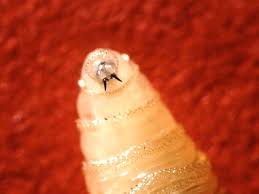
The Department of Health and Human Services reported the first human case of the flesh-eating parasite, the New World screwworm, in the United States.
- Screwworms are a type of blue-grey blowfly, typically found in South America and the Caribbean.
- The parasites are named after the screw like way they burrow into the tissue.
- Screwworms specifically females are attracted to and lay eggs on and in open wounds or another entry point like a nasal cavity in warm-blooded animals and, rarely, humans.
- One female can lay up to 300 eggs at a time and may lay up to 3,000 eggs during her 10- to 30-day lifespan.
- These eggs hatch into larvae (known as maggots), which burrow into the wound using their sharp mouth hooks to feed on the living flesh, leading to infestation.
- After feeding, the larvae fall into the ground, burrow into the soil and emerge as adult screwworm flies.
- Symptoms of infestation include: wounds or sores that do not heal; bleeding from open sores; feeling larvae movement within a skin wound or sore; and a foul-smelling odour from the site of the infestation.
- Its infestations can be extremely painful, especially in humans, with a high mortality rate if left untreated.
The Delhi High Court banned Sci-Hub and its mirror sites:

The Delhi High Court banned Sci-Hub and its mirror sites following a copyright case by global publishers.
- This has revived the debate on access to research papers and the role of the government’s One Nation, One Subscription (ONOS)
Sci-Hub:
- Founded in 2011 by Alexandra Elbakyan, Sci-Hub is a free online repository of millions of research papers.
- It bypasses paywalls, offering access to academic journals without subscriptions.
- Hugely popular among students, researchers, and independent scholars in developing countries.
The Sci-Hub Case:
- Elsevier, Wiley, and ACS sued Sci-Hub for copyright infringement. The Delhi HC held Elbakyan in contempt for breaching earlier undertakings.
- Internet Service Providers were directed to block Sci-Hub and related portals.
- While the verdict upheld intellectual property rights, it left unresolved the larger question of how ordinary researchers can afford access in India.
One Nation, One Subscription (ONOS) Scheme:
- Launched in 2024, with an outlay of ₹6,000 crore for the first phase (2023–26).
- Negotiates bulk deals with 30 publishers to give access to 13,000 journals.
- Phase I: Covers public institutions and universities.
- Phase II: To include private institutes and colleges.
- Objective is to ensure universal and legal access to research material across India, reducing reliance on piracy.
PMJDY completes 11 years on August 28, 2025:
PMJDY completes 11 years on August 28, 2025, emerging as the world’s largest financial inclusion programme. Nearly 100% households and over 90% adults in India now have a bank account. It was Launched in 2014, PMJDY was designed to provide universal access to banking for the unbanked.
Its objectives include zero-balance accounts, RuPay debit cards, insurance, pensions, and Direct Benefit Transfers (DBTs). The scheme has reduced reliance on moneylenders and informal credit networks, historically a trap for the poor.Over 56.2 crore accounts opened, compared to ~15 crore in 2015.
This represents the world’s largest financial inclusion drive.
Milky Way galaxy called UPM J1040−3551 AabBab : Discovered
Scientists have discovered a rare quadruple star system in our Milky Way galaxy called UPM J1040−3551 AabBab. It is the first known system where two brown dwarfs orbit around two red dwarf stars. UPM J1040−3551 AabBab is unique 4-star system: 2 Red dwarf stars (small, common stars that shine faintly but live very long), 2 Brown dwarfs (objects between stars and planets, called “failed stars” because they cannot fuse hydrogen like stars).
Digital Services Taxes (DSTs):
Former US President Donald Trump has threatened additional tariffs on countries imposing Digital Services Taxes (DSTs) on American tech giants, calling them discriminatory.It is gross-revenue tax (not corporate income tax) levied on specific digital services like online advertising, digital marketplaces, intermediation, and sale of user data. Applied on the revenues generated from users in the taxing country, irrespective of where the company is headquartered.Aim is To ensure fair taxation of global digital companies that earn significant revenue from a country’s users without having a physical presence there and To address tax base erosion and ensure that value created by user participation is taxed locally.
Centre has finalised a 21-member National Designated Authority (NDA):
The Centre has finalised a 21-member National Designated Authority (NDA) to enable India’s carbon market. This is a mandatory step under Article 6 of the Paris Agreement (2015).It is a statutory requirement under Article 6, created by the Environment Ministry.
Serves as the nodal body to regulate, approve, and monitor carbon market activities in India.
Composition:
- 21-member committee, chaired by the Environment Secretary.
- Includes representatives from External Affairs, Steel, Renewable Energy, Power, and NITI Aayog.
- Multi-sectoral structure ensures alignment with both domestic priorities and international obligations.
China rejected Japan’s protest over its development of gas fields in the disputed East China Sea:
China rejected Japan’s protest over its development of gas fields in the disputed East China Sea, where both nations’ Exclusive Economic Zone (EEZ) claims overlap.It is amarginal sea of the Western Pacific Ocean, bounded by China, Japan, Taiwan, and South Korea. Known for its geopolitical disputes, rich fisheries, and potential oil & natural gas reserves. Plays a central role in maritime security and freedom of navigation in Asia.
It Lies east of China’s coast and south of Japan’s Kyushu & Ryukyu Islands. Connected to: Yellow Sea (to the north) via the Korea Strait. South China Sea (to the south) via the Taiwan Strait. Pacific Ocean (to the east).
Reserve Bank of India (RBI) has affirmed the successful performance of the Flexible Inflation Targeting (FIT) framework:
The Reserve Bank of India (RBI) has affirmed the successful performance of the Flexible Inflation Targeting (FIT) framework in maintaining price stability. A recent discussion paper from RBI indicated that, since its introduction, inflation remained low and stable, averaging around 4% until the end of 2019. Post the Global Financial Crisis, India experienced a mix of persistently high inflation and sluggish growth, prompting debate on improving monetary policy credibility. Urjit Patel Committee Report (2014) recommended adopting Inflation Targeting with inflation as the nominal anchor for monetary policy. India formally adopted FIT in 2016 through amendments to the RBI Act, 1934. The adoption followed a Monetary Policy Framework Agreement signed between the Government of India and the RBI in 2015. Unlike strict inflation targeting, FIT allows short-term deviations from the target to accommodate supply-side shocks (e.g., food price spikes, fuel volatility), and economic crises (e.g., pandemic, war). It provides room to prioritize growth during downturns while returning to the inflation target path over the medium term. The 4% inflation target with a tolerance band of ±2% balances price stability and growth, aligning with global norms for emerging economies. Since adopting FIT in 2016, inflation volatility has decreased. The current band provides flexibility to absorb shocks from food, fuel, and global volatility, with 94% of inflation staying within this range.
India – Eurasian Economic Union FTA Negotiations:
India and the Eurasian Economic Union (EAEU) have signed the Terms of Reference (ToR) to launch negotiations on a Free Trade Agreement (FTA), a move that comes after stalled trade talks with the United States and rising US tariff threats.EAEU is an international organization for regional economic integration with international legal personality.EAEU was established via the Treaty on the Eurasian Economic Union (entered into force in 2015). Member States: Republic of Armenia, the Republic of Belarus, the Republic of Kazakhstan, the Kyrgyz Republic and the Russian Federation. Headquarters: Moscow, Russia. Objectives: The EAEU ensures free movement of goods, services, capital, and labor, promotes coordinated policies, modernizes member economies, enhances competitiveness, and supports stable development to raise living standards.
India- US 2+2 Intersessional Dialogue:
India and the US held the 2+2 Intersessional Dialogue (a mid-cycle review of the broader 2+2 Ministerial Dialogue), focusing on advancing a new 10-year defense framework to boost defense production, while also strengthening trade and energy security. Both sides agreed to strengthen cooperation under the US-India COMPACT(Catalyzing Opportunities for Military Partnership, Accelerated Commerce & Technology) framework and reaffirmed their commitment to a safer, stronger, and more prosperous Indo-Pacific through the Quad. It is important as India is set to host the 2025 Quad Leaders Summit, with the US, Japan, and Australia reaffirming their commitment to a stronger Indo-Pacific. 2+2 Ministerial Dialogue: It is an annual diplomatic summit, initiated in 2018, originally between India and the US. It later expanded to include Japan, Australia, Russia, and the United Kingdom.
The dialogue, involving the Foreign and Defense Ministers of the participating countries, focuses on strengthening bilateral relations and addressing shared security concerns.


